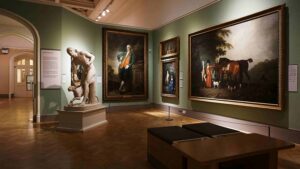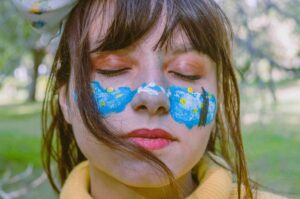Our bodies are incredible, complex systems made up of various organs, each with a specific role. But have you ever wondered why we have these organs? Beyond their biological functions, our organs help us experience and feel the art of life. Let’s explore this idea in a simple and creative way.
The heart is often seen as the seat of emotions. It beats faster when we’re excited, slows down when we’re calm, and sometimes feels like it skips a beat when we’re in love. This rhythmic pulsing is like the beat of a drum, setting the tempo for our experiences and making us feel alive. It’s the heart that makes us feel the intensity of a beautiful song or the thrill of a captivating dance. The rhythmic beat of the heart is a constant reminder of our emotional and physical state, seamlessly integrating our inner world with the outer experiences that shape our lives.
Our eyes are like natural cameras, capturing the beauty around us. They let us see the vibrant colors of a sunset, the intricate details of a painting, and the expressive movements of a performer. Through our eyes, we take in the visual art that surrounds us, appreciating the creativity and splendor of the world. The ability to see colors, shapes, and movements allows us to enjoy and interpret the visual wonders that life has to offer. The eyes provide a window into the vastness of the visual world, allowing us to appreciate the myriad of artistic expressions present in our daily lives.
Our ears allow us to hear the symphony of life. From the gentle rustling of leaves to the powerful notes of a symphony, our ears help us experience the auditory art of our environment. They enable us to enjoy music, hear the laughter of friends, and listen to the soothing sounds of nature. The intricate design of our ears captures a wide range of sounds, each contributing to the rich auditory tapestry of our lives. The ears serve as our connection to the auditory world, enriching our lives with the diverse and harmonious sounds that surround us.
Our skin is the largest organ and our main interface with the world through touch. It allows us to feel the smoothness of a sculpture, the warmth of a loved one’s embrace, and the textures of different materials. Touch connects us to the physical art of our surroundings, making our experiences more tangible and real. The sense of touch brings a tactile dimension to our interactions with the world, enhancing our emotional and sensory engagement with our environment. Through our skin, we can physically connect with the world, feeling the textures and temperatures that give depth to our experiences.
Our nose lets us breathe in the aromas that add an extra layer of richness to our lives. The smell of fresh rain, the scent of blooming flowers, or the aroma of a delicious meal all enhance our sensory experience. These scents are like the invisible brushstrokes that complete the painting of our daily lives. The olfactory senses play a crucial role in evoking memories and emotions, deepening our connection to the moments we experience. The nose enhances our perception of the world, adding another layer to the sensory art that fills our lives.
Finally, the brain is the conductor of this orchestra of sensations. It processes all the information from our senses, allowing us to interpret and enjoy the art around us. The brain helps us understand and appreciate the beauty, meaning, and emotions conveyed through various forms of art. It integrates the sensory data into a coherent experience, enabling us to feel the full impact of the world’s artistic expressions. The brain orchestrates our sensory inputs, creating a harmonious understanding of the artistic beauty that surrounds us.
In essence, our organs are not just functional parts of our bodies; they are gateways to experiencing the art of life. They help us see, hear, feel, and interpret the world in a way that enriches our existence and makes every moment more vibrant and meaningful. Through our organs, we don’t just live life; we feel it, in all its artistic glory. The harmonious interplay of our senses allows us to fully engage with and appreciate the beauty and complexity of the world around us, transforming everyday experiences into a continuous, dynamic work of art.




